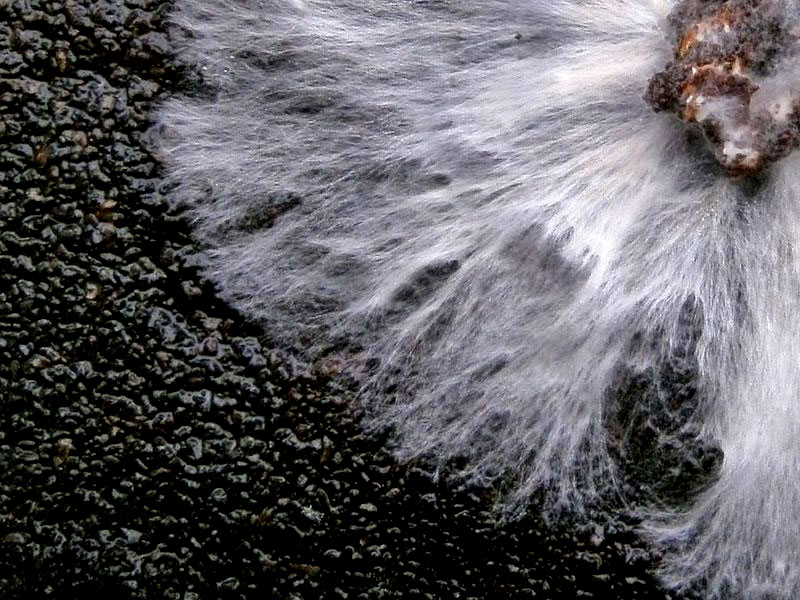By Dr. Tamsin Woolley-Barker
No matter which side of the aisle you’re on, I think it’s safe to say most of us took little pleasure in the interminable 2016 election. Half of us either voted for a candidate that spoke to our identity and made us feel seen, or against a candidate that threatened that identity. Some even voted on the issues. That’s democracy, and that’s well and good. But the big story is half of us stayed home. We just couldn’t find a candidate that spoke for us, or that we could tolerate enough to drag ourselves to the polls for. Half of us quit on democracy.
Young people were silenced. Traditional conservatives were trampled. Many stayed home, out of protest or dismay. One way or another, their voices were systematically stripped out by hierarchy. The party pyramids turned them into irrelevant noise, and removed them from the democratic system.
That’s what hierarchies do. Nature uses hierarchies all the time for this very purpose. They remove noise and amplify patterns, amplifying one single signal from the din. A hierarchy of neurons in our brains strips out noise, and helps us make snap decisions—not always the right ones. A hierarchical system of cells in our bodies nips cancerous growths in the bud. Hierarchies like these are good at controlling upstarts—but they aren’t the right structures for adapting to change. In fact, they are the best way to avoid noticing it’s even happening.
It’s like boiling a frog. If the water in the pot heats slowly, only the frog’s most peripheral neurons—those in his skin—perceive the change. As these local, frontline receptors bundle the warning signals into progressively larger structures, relaying the alert to the brain, any outlying, unusual information is stripped away. The frog never registers the danger, and he never jumps out of the water. He sits there happily—warm and sleepy—until he suddenly finds he’s frog soup.
Our election system and government suffer from the same problem—all our decision-making pyramids do. Decisions occur far from the local particulars of everyday life. A leader may have the big picture, but he lacks the local details. Meanwhile, money and power flow to the top, where it stays—because that’s where the top likes it. It’s a runaway system with little to check it. Hierarchies are invested in the status quo, and they are good at maintaining it. Outliers and naysayers are stripped away, as irrelevant, inconvenient noise. Leadership never registers the change until the system destabilizes and falls. We sit warm and happy, oblivious to impending frog soup.
If anything odd is filtered out, it doesn’t mean change isn’t happening.
It just means we don’t see it coming.
Charles Darwin once wrote, “it is not the strongest of the species that survive, nor the most intelligent, but the one most responsive to change.” Our hulking pyramids—big hierarchical organizations of every kind—fail to do that. Like the dinosaurs, our political parties and government seem blissfully oblivious to approaching cosmic collisions. They snugly wait for the water to boil. Decisions swell as we move up the chain of command, and the number of people making them shrinks. The most powerful decision-makers are those furthest from the frontlines. They are overwhelmed with decisions and meetings, but the local information they require has been stripped away. How can one person at the top possibly make all the right choices? They can’t, and they don’t. The evidence never reaches them. Our systems fail to respond to changing conditions––no matter how many red flags and alerts–– and the frog boils.
Hierarchies aren’t good at adapting, because they eliminate the diverse signals that would tell them that change is occurring. Our diverse and noisy opinions and perspectives get in the way of clear patterns. Hierarchies strip that confusion away in favor of clarity—a single, simple signal. We like that. Certainty and simplicity feel safe, and give the illusion of stability. But if anything odd is filtered out, it doesn’t mean change isn’t happening. It just means we don’t see it coming.
Any particular ant isn’t too impressive by itself, but together,
the colony is intelligent, agile, resilient, and innovative—everything we’d like
our organizations to be.
Here we stand on a dwindling planet, staring down the barrel of a ten billion-human population explosion, on the brink of the sixth wave of extinction. The summers get hotter, the winters weirder. In our hearts we know we can’t beat our global problems with bigger bones, so we’re inclined to get rid of them altogether. Another election? Throw those bones to the wolves. We stay home, knowing our small voices make no difference. No one hears us anyway. Our systems are close to breaking down, at a time when we can least afford them to.
Other collaborative species take a very different approach.
Every creature alive today is a survivor. Four billion years worth of ancestors passed on ancient survival strategies, evolving these adaptation mechanisms as they went. These are proven solutions to life’s thorniest challenges. When faced with problems of our own, we can ask, ”how would nature do it?” then look for the deep patterns and technologies that have survived the test of time. The shark and the octopus live much as they did 400 million years––and several major extinction events––ago, and their ways of life work even as the world changes. Today, their ancient adaptations help us develop exciting applications in material science, maritime design, surface chemistry, energy use, medical devices, and display screens.
So how would nature elect a president?
When giant dinosaurs ruled the land, hard-working teams of termites and ants built wealth alongside them—and they still do. Ant colonies have existed for 150 million years, and termites a quarter of a billion—some mounds have been occupied for two and a half millennia.[1] These ancient societies don’t rely on a single leader, or hierarchies of command. They are superorganisms—flat and flexible biological networks that behave as one creature. Any particular ant isn’t too impressive by itself, but together, the colony is intelligent, agile, resilient, and innovative—everything we’d like our organizations to be. These insects are hugely successful.
Beneath the soil we walk on, lies a half-billion year old pulsing nutrient superhighway of fungus … Scientists refer to their dense webs as our planet’s neurological network—a kind of subterranean brain.
And there are collaborative teams even more ancient and successful than these. Beneath the soil we walk on, nearly everywhere on Earth, lies a half-billion year old pulsing nutrient superhighway of fungus—a dense fuzzy network of individuals on the hunt for matter to digest and minerals and water to absorb. If a meal is out there, they will find it. When they do, the nutrients flow throughout the system, to wherever they are needed most, because the fungi are fused into one. They even bring water and minerals to nearby plants, trading it for photosynthetic sugar fuel. These fungi are farmers. Scientists refer to their dense webs as our planet’s neurological network—a kind of subterranean brain. This brain is not a hierarchical structure, however. It is flat. Together, the network responds effortlessly to any change as it occurs. They sense our footfalls, and the munch of an insect on a leaf. What one cell knows, the whole network is aware of. They relay the message to the plants on the surface above, triggering their timely production of chemical defenses.
These underground fungi may represent a quarter of all terrestrial biomass—one 8,600-year-old colony is sixteen football fields wide! Their societies are as close to immortal as living things get, with an ancient way of life some 500 million years old. They have survived dramatic upheaval and many catastrophic waves of extinction, and they continue to thrive. The secret to their success is flexible intelligence—they work in flat, bottom-up networks, sensing and responding to real-time conditions on the frontlines. They don’t filter out diverse signals—they actively seek them out.
Superorganisms and networked creatures collaborate on complex tasks just as we do. They farm, build elaborate nests, hunt together, herd and milk tame aphids and caterpillars (or cows and goats), and defend their nests as a team.
The secret to their success is flexible intelligence—they work in flat, bottom-up networks, sensing and responding to real-time conditions on the frontlines. They don’t filter out diverse signals—they actively seek them out.
How would they elect a president?
They wouldn’t, and they don’t. Their decisions emerge from the ground up.
Living things are that way. Have you ever been outside on a summer afternoon—maybe having a barbecue, drinking a beer—when a big, fat junebug zooms along and bangs into you, then backs up and smacks into someone else like a kid on a bumper-car ride, then zooms off into the twilight? You probably wondered how such a stupid creature could survive, but there’s an excellent reason why the junebug flies this way: he doesn’t know where his target is. He must compare one patch of air to the next, and move toward the one with more molecules of the scent he seeks—the smell of the female junebug. He doesn’t have the big picture. He has to build his trail as he goes. That’s how living things are—they aren’t linear, with predetermined outcomes. They know they need to make the next generation more successful than the last, but they don’t progress there in a straight line because they don’t know where they need to be. They just move to the next best possibility. Living things zig and zag on their way to success.
Their diverse genes, ideas and styles represent open doors to evolutionary change—diversity is their raw feedstock of innovation and transformation.
Every junebug blunders alone, and the results do not impress us. But in ant society, all this individual blundering builds. Errors cancel out, and collective intelligence results. Together, their colonies look a lot like our own top-down organizations do—but with a lot less processing power, more efficient decision-making, and far greater resilience.
Instead of top-down directives, ants and honeybees rely on distributed leadership and collective intelligence. No one gives an order, and they have no proscribed plan—just a shared goal (making each generation more successful than the last) and a set of simple rules. Each member senses and responds to its own, slightly unique, experience—filtering it through its own tendencies, talents, and perspectives. Their diverse genes, ideas, and styles represent open doors to evolutionary change—diversity is their raw feedstock of innovation and transformation. Without these open doors, the population fails to adapt. In a superorganism society, everyone pursues the strategy they deem best at that moment, and the doors of possibility stay open. Even as one strategy fails, another is already underway, and the colony is resilient to change. There is always another way around.
We can put this kind of wisdom of the crowd to work for ourselves. Instead of trying to concentrate intelligence in a single executive control center—one brain, one president, or one cabinet of one president’s choosing—we can distribute it throughout the system, like ants fanning out in search of food. We can distribute decision-making among ourselves, and put all our diverse perspectives and talents to good use.
Most scouts only visit one spot, but no bee will vote for something she hasn’t seen. They don’t share fake news––the wisdom of their collective intelligence is built upon factual accuracy.
Honeybees can show us how it’s done. When a hive is successful, it will split, and half must find a new home. Most cluster nearby on a branch, while the oldest and most knowledgeable go out to scout. They fly in different directions, looking for suitable spots. When a scout finds one, she inspects it. Is it dry? Safe? Could it store enough honey for the winter? Then she flies back to the swarm and does a “waggle dance”—a series of symbolic movements that tell the other scouts where it is. Some fly out to see for themselves. If it meets their approval, they return and dance for it too. The dance-floor grows noisy, as bees waggle for different sites. Over time, dances for good sites grow, while poorer site dances fade away. Eventually, one site acquires a critical threshold of support––it’s a forest dance party––and the entire hive takes to the air, making a beeline for their new home.
The process appears chaotic—there are no leaders or committees, and the computing power is low and distributed. None of the bees are particularly clever—each one blunders, just as the junebug does. But by gathering a diverse selection of independent and truthful possibilities, and staging an honest competition without hearsay, the bees converge on one choice. And amazingly, they nearly always choose the best site.
Honeybee democracy rests on a few simple things:
- Diverse individuals self-organize into networks.
- Independent individuals aggregate many tiny, distributed scraps of information in open, two-way conversations.
- Simple rules and actions build to tipping-point decisions.
- They protect the network from parasites by insisting on transparent and truthful transactions.
Most scouts only visit one spot, but no bee will vote for something she hasn’t seen. They don’t share fake news––the wisdom of their collective intelligence is built on factual accuracy. If any species ever proliferated falsehood, it is extinct today. It’s also worth noting that every superorganism is plagued by parasites—nefarious species that seek to profit from the colony’s hard work. These creatures specialize in tricking the colony, often by mimicking their scent to gain entry. Some entice their hosts to play along, producing eggs that resemble the ants’ favorite seeds or the scent of their larvae. The ants dutifully bring them down to the nests, where they hatch and devour the young. The most terrifying villain of all is the Cordyceps fungus. As these airborne spores settle, they quickly penetrate the ant’s shell and spread through its body, releasing a chemical cocktail that commandeers the ant’s brain. The fungus knows its host well, and tailors the chemical message precisely. Bewitched, the ant trudges up a plant stalk and digs in its mandibles, dangling its zombified body over her sister-ants below. A spore-releasing stalk emerges from the back of her head, exploding in a rain of deadly spores. The colony is soon consumed.
Successful superorganisms work hard to prevent this kind of thing, and that is where hierarchies succeed. Leafcutter ants isolate the oldest workers in the garbage dump, forcing them to stay and work there so they don’t unwittingly carry parasitic spores into the nest. Top-down leadership is useful for verifying facts and revealing the “money-trails” parasites leave behind. If government won’t step up to insist on truth and transparency, then companies and individuals must. No superorganism would allow a foreign government to manufacture fake news to manipulate their networks unchecked, and none would continue to collect those false signals and bring them into the nest. Any that did are long gone.
Truth and transparency, diversity and independence are the keys to successful collaboration in nature.
How different this is from our current decision-making process!
One person—an elector—rides their metaphorical white horse to the Capitol, and places our vote for one president for us. Some electors are worth more than others––one from Wyoming is worth three and a half Californians. One from Vermont equals three and a half Texans. Successful superorganisms don’t operate this way. They operate on the Junebug Principle: when you don’t know what you don’t know, you don’t decide in advance who participates, or whose opinion is worth more than another’s. Everyone just adds their two cents, and the transactions are visible to everyone all the time. Today we have the technology to govern collectively, in real time, like the bees do. With the right kind of software, we could tap collective intelligence to run a government or create a national budget––a digital document morphing to reflect the wisdom of the crowd.
Why do we persist with political parties and the electoral college, superdelegates, gerrymandered political districts, and a single president, chosen by only a quarter of the people, many of them infected by the parasitic spores of false news? The answer is tradition and entrenched interests—complex systems fiercely resisting change. But radical change occurs when ordered systems approach the edge of chaos, and it seems we are approaching that now. It is doubtful the next generation of digital natives will have much patience for parties and presidents. Press the right leverage points, and watch the thing flip on a dime. Revolutions surprise us, and change is sudden and unexpected. The water boils, and we don’t see it coming. The networked way of life works, and failures are fossils (as Janine Benyus says). The ants thrive, and the dinosaurs are no more.
No leader can know everything in this complex and changing world, and the more uncertain the future, the less one single vision is likely to be the right one. Ant scouts wander, junebugs blunder—they don’t know what they don’t know, and they can’t afford to limit the possibilities.
Collective intelligence and distributed leadership are evolutionarily proven strategies for success. Diversity and independence, networked by transparent and truthful transactions, allow the wisdom of the crowd to go to work. With flat networks, we can innovate better, make more accurate decisions, and enjoy far greater resilience. We can respond to change much faster. Stop boiling the frog, and sense the local details.
It’s time to jump out of the water.
Dr. Woolley-Barker is an Evolutionary Biologist and pioneer in the emerging discipline of Biomimicry. She serves as an independent ‘Biologist at the Design Table’ with organizations like Biomimicry 3.8, providing biologically inspired innovation for a global clientele. Her book TEEMING: How Superorganism Work To Build Infinite Wealth in a Finite World is available from White Cloud Press.
[1] “2,200 Year Old Termite Mound Discovered in Central Africa.” Sarah Tse. The Science Explorer, accessed September 9, 2015 http://thescienceexplorer.com/nature/2200-year-old-termite-mound-discovered-central-africa





